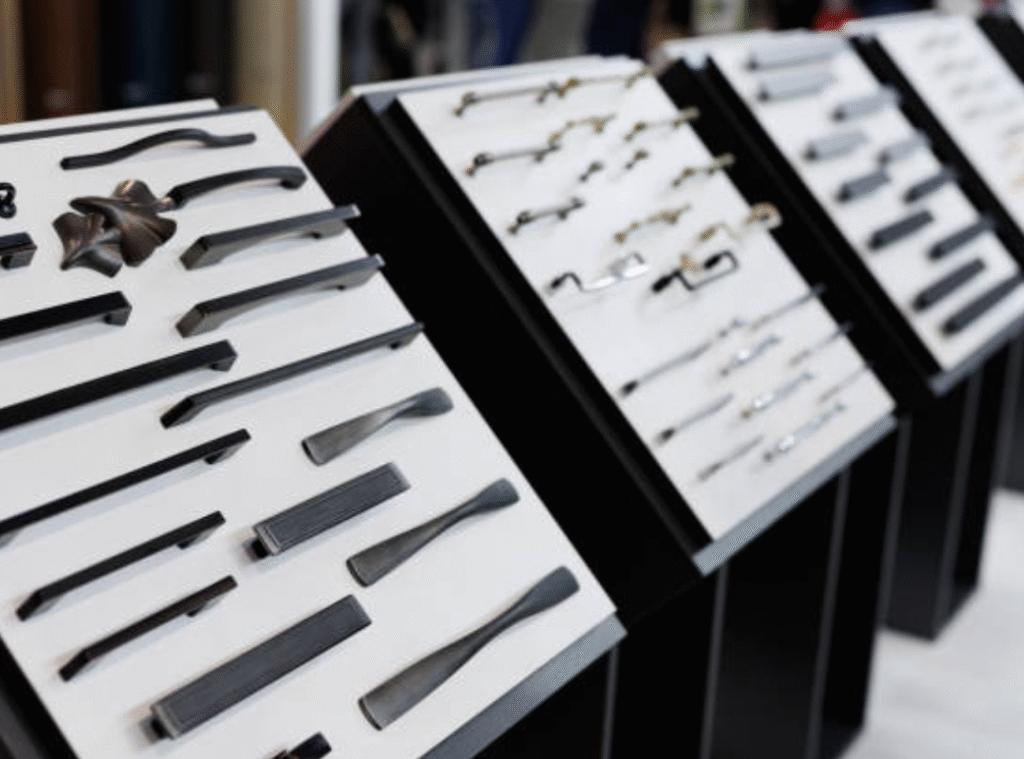When designing or renovating a home, most homeowners focus on big-ticket items like flooring, cabinetry, and wall finishes. However, one of the most underrated yet impactful design decisions lies in choosing hardware that matches your style. From cabinet pulls to door handles, faucets to light fixtures, hardware acts like the jewelry of your home—subtle yet transformative. Choosing the right hardware can elevate a space, blending seamlessly with your aesthetic and enhancing the overall design. But with so many styles, finishes, and functions available, how do you select hardware that truly resonates with your vision?
Understanding Your Design Style Before Selecting Hardware
Before you browse through endless knobs and pulls, it’s essential to define your interior design style. Whether your taste leans toward modern minimalism, rustic charm, traditional elegance, or industrial edge, your chosen hardware should complement that narrative. For instance, matte black handles often align well with contemporary interiors, while antique brass or oil-rubbed bronze is more suited for vintage or farmhouse-style homes. Understanding the characteristics of your decor style will serve as a foundation for picking hardware that matches without clashing or competing with other design elements.
Take note of materials and shapes used throughout your space. Are your furniture pieces streamlined or ornate? Is your palette warm or cool? Such details inform whether you need curved handles or sharp lines, metallic finishes or muted tones. When all elements echo the same language, hardware enhances the space, rather than standing out for the wrong reasons.
Finish Matters: Creating Cohesion with Metal Tones
The finish of your hardware plays a significant role in creating harmony within a space. While mixed metals are trending, there should still be a clear intention behind your choices. Too many finishes can create visual noise. To choose hardware that matches your home, you need to consider the metal tones already present in light fixtures, plumbing fittings, and even furniture legs.
For a unified look, stick to one primary metal finish throughout a room and supplement it with a secondary accent if desired. Polished chrome lends a sleek, modern vibe, while brushed nickel offers a softer, more transitional feel. Brass, especially in a satin or aged finish, can inject warmth and luxury. Matching your faucet with cabinet handles or coordinating light fixtures with doorknobs helps bring balance and a professional feel to your interiors.
When coordinating finishes, consider sheen as well. Matte finishes absorb light and offer a more subdued look, whereas shiny finishes reflect light and add brilliance. Think about the mood you want to set in each room and align your choices accordingly.
Functionality and Aesthetic
While looks are important, your hardware must also be functional. Choosing hardware that matches your aesthetic is only beneficial if the pieces are also comfortable and practical to use. For example, sleek flat pulls may look stunning in a modern kitchen but could be difficult to grip for young children or elderly family members. Similarly, knobs may be more aesthetically pleasing in a bathroom but offer less leverage compared to handles.
This is where expert insight becomes valuable. If you’re working with a custom builder or designer, like those offering Owen Sound residential construction services, you gain the benefit of experience. These professionals can help you weigh aesthetics against functionality, guiding you to make choices that look great and also enhance the daily usability of your home. They understand the nuances of how hardware interacts with cabinetry, door swings, and layout flow, ensuring your design choices make sense in the context of how you live.
Moreover, some hardware is more durable than others. High-traffic areas like kitchens and entryways demand sturdy finishes that resist fingerprints and wear. Aesthetic appeal should never come at the expense of durability, especially in functional zones. Quality craftsmanship always pays off in the long run.
Choosing Hardware for Kitchens and Bathrooms
Kitchens and bathrooms are the most hardware-intensive spaces in any home. These rooms feature cabinetry, faucets, towel bars, lighting, and more—all requiring cohesive selections. When choosing hardware that matches, think about these rooms holistically rather than in isolation. For example, a modern brushed brass faucet in a bathroom should pair with drawer pulls in a similar finish, even if their designs slightly differ.
In kitchens, don’t shy away from statement pieces. Oversized handles can act as focal points, while sleek recessed pulls suit minimalist cabinetry. Try to balance scale and proportion—small knobs may look lost on large cabinet doors, while chunky handles can overwhelm delicate furniture. The best approach is to align your hardware’s size with the visual weight of your cabinetry and appliances.
Bathrooms, meanwhile, benefit from moisture-resistant finishes like chrome, stainless steel, or powder-coated metals. Make sure towel bars, toilet paper holders, and robe hooks echo the finish of your faucets and cabinet hardware. A unified look enhances tranquility and elevates even the simplest powder room.
Mixing and Matching Without Clashing
While cohesion is key, you don’t have to match every single piece exactly. Mixing hardware can add depth and character when done thoughtfully. The trick is to find a unifying thread—whether it’s a shared shape, finish, or style. For example, you could pair a matte black faucet with brushed brass handles, provided they share similar silhouettes or are tied together by black accents elsewhere in the room.
When choosing hardware that matches, consider keeping one finish consistent across large surfaces like doors and cabinetry, and then introducing a secondary tone through light fixtures or accent pieces. Repeating each finish at least twice in the same space prevents anything from feeling out of place. This technique lets you embrace trends without sacrificing timeless appeal.
You can also mix knobs and pulls for visual interest. Use knobs on upper cabinets and pulls on lower ones, or alternate styles between rooms while maintaining a consistent finish. This allows personalization without disrupting overall harmony.
Hardware as a Design Signature
Think of your hardware as the final brushstroke on your home’s canvas. Well-chosen pieces can serve as a design signature—expressing your personality, taste, and lifestyle. Whether it’s an intricately designed vintage doorknob or a minimalist bar pull, every piece adds character. Choosing hardware that matches your vision transforms your home from standard to standout.
Pay special attention to entryways, where door hardware makes a first impression. Likewise, statement handles on pantry doors, built-ins, or closet drawers can elevate everyday experiences. If you’re incorporating custom carpentry or millwork, select hardware that enhances these unique features. This creates a custom-built feel, even in the smallest details.
Additionally, hardware can be seasonally updated or swapped as trends evolve. While cabinetry or flooring is harder to change, updating drawer pulls or door levers is relatively low-cost and low-labor. This makes hardware an excellent way to refresh your home’s look without a full renovation.
Final Thoughts
Choosing hardware that matches your style is more than just a trip to the hardware store—it’s a curated process that involves understanding your design language, balancing form with function, and making intentional choices that reflect who you are. Whether you’re updating a single room or building a custom home from the ground up, never underestimate the impact of quality hardware.
Every knob, pull, hinge, and lever plays a role in your daily interactions with your space. Treat each piece as part of the greater story your home tells. Take the time to research, sample, and compare. Your future self will thank you each time you open a drawer or turn a doorknob that feels just right.


